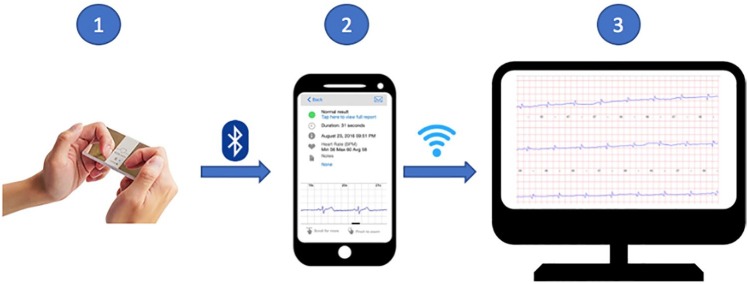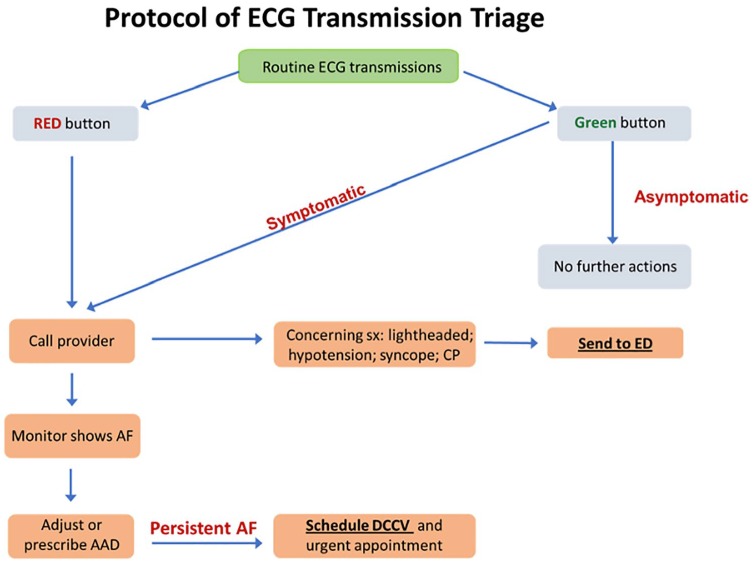智能手机心电监测系统有助于降低房颤消融后患者的急诊和门诊就诊次数。
IF 2.3
Q2 CARDIAC & CARDIOVASCULAR SYSTEMS
Clinical Medicine Insights. Cardiology
Pub Date : 2020-01-20
eCollection Date: 2020-01-01
DOI:10.1177/1179546820901508
引用次数: 23
摘要
目的:评估使用基于智能手机的心电图(ECG)监测设备(ECG Check)对房颤(AF)消融患者门诊或急诊室就诊频率的有效性。方法:将两组患者进行比较:常规监测组(CM组)包括常规事件监测或动态心电图监测系统的患者。ECG检查组(EC组)包括在常规事件监测之外使用ECG检查设备进行连续监测的患者。主要结果是患者到诊所或急诊室就诊的次数。并对移动心电检查的可行性、准确性和检出率进行了评价。结果:90例患者(平均年龄:66.2±11岁,男性64例,平均CHA2DS2-VASc评分:2.6±2)。在EC组中,45例患者在随访期间平均发送52.8±6次心电图记录用于常规监测或潜在房颤症状。节律条发现窦性心律(84.7%)、窦性心动过速(8.4%)、房颤(4.2%)和心房扑动(0.9%)。42个EC传输(1.8%)无法解释。在100天的研究期间,EC组有6名患者(13%)在诊所或急诊室就诊,而标准护理组有16名患者(33%)在诊所或急诊室就诊。(P值)结论:使用基于智能手机的ECG监测导致消融后与房颤相关的诊所或急诊室就诊人数显著减少。本文章由计算机程序翻译,如有差异,请以英文原文为准。



Smartphone ECG Monitoring System Helps Lower Emergency Room and Clinic Visits in Post-Atrial Fibrillation Ablation Patients.
Aim: To evaluate the effectiveness of using a smartphone-based electrocardiography (ECG) monitoring device (ECG Check) on the frequency of clinic or emergency room visits in patients who underwent ablation of atrial fibrillation (AF). Methods: Two groups of patients were identified and compared: The conventional monitoring group (CM group) included patients who were prescribed conventional event monitoring or Holter monitoring systems. The ECG Check group (EC group) included patients who were prescribed the ECG Check device for continuous monitoring in addition to conventional event monitoring. The primary outcome was the number of patient visits to clinic or emergency room. The feasibility, accuracy, and detection rate of mobile ECG Check were also evaluated. Results: Ninety patients were studied (mean age: 66.2 ± 11 years, 64 males, mean CHA2DS2-VASc score: 2.6 ± 2). In the EC group, forty-five patients sent an average of 52.8 ± 6 ECG records for either routine monitoring or symptoms of potential AF during the follow-up period. The rhythm strips identified sinus rhythm (84.7%), sinus tachycardia (8.4%), AF (4.2%), and atrial flutter (0.9%). Forty-two EC transmissions (1.8%) were uninterpretable. Six patients (13%) in the EC group were seen in the clinic or emergency room over a 100-day study period versus 16 (33%) in the standard care arm (P value < 0.001). Conclusions: Use of smartphone-based ECG monitoring led to a significant reduction in AF-related visits to clinic or emergency department in the postablation period.
求助全文
通过发布文献求助,成功后即可免费获取论文全文。
去求助
来源期刊

Clinical Medicine Insights. Cardiology
CARDIAC & CARDIOVASCULAR SYSTEMS-
CiteScore
5.20
自引率
3.30%
发文量
16
审稿时长
8 weeks
 求助内容:
求助内容: 应助结果提醒方式:
应助结果提醒方式:


